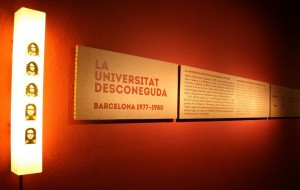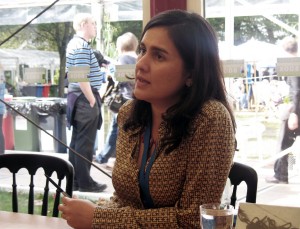Many writers from all around the world have written about Barcelona, embracing the city as theirs. A great number of foreign gazes, from George Orwell to Jean Genet, to the first writers of the Latin American boom, for example Gabriel García Márquez and Mario Vargas Llosa, who for years made the city the base for their European operations, to Roberto Bolaño who described his Barcelona in Consejos de un discípulo de Morrison a un fanático de Joyce (Advice from a Morrison Disciple to a Joyce Fanatic) – now being adapted for the stage – and Los detectives salvajes (The Savage Detectives), to Colm Tóibín and The South, to Richard Gwyn and The Colour of a Dog Running Away … have contemplated Barcelona. Very few, however, have depicted today’s multicultural metropolis. There are travellers’ chronicles – including Hemingway’s notes from his time as a correspondent – flashes from the past, glimpses of the fascinating red-light district known as Barri Xino, or of the cosmopolitan capital of the seventies when speaking Catalan was a private matter, but there are virtually no novels about today’s global metropolis or chronicles of this “global city” of more than 200 languages, in which there are neighbourhoods like the Raval where more than half the residents were born abroad. Among the writings of today’s newcomers, the “latest ‘other Catalans’”, there are only the novels by Laila Karrouch and Najat el Hachmini, the work of Matthew Tree, Stefanie Kremser’s Carrer dels oblidats and Carrer Robadors by Mathias Énard, but novels about the 23,000 Pakistani residents or the 6,000 Chinese people in Santa Coloma, the story of the Italian community, and the family worries and joys of the 8,500 Filipinos living in the city are yet to be written.
England is the great reference for multicultural literature in which, for several generations now, the narrators have depicted everyday reality in England’s hundreds of immigrant communities. Owing to the tradition of integration in this country at the heart of the Commonwealth, or simply because of its language, which was taught in the colonies, all kinds of accents and uses have easily been embraced and adapted (would we accept a novel about Barcelona in Spanglish, or Catalan mixed with other languages, when we already make such a fuss about the Spanish-Catalan hybrid we might call Catanish?) literary England today is replete with Zadie Smith’s districts, Vikram Seth’s interracial marriages and recent exiles, as Nadeem Aslam remarked when he was here some months ago. Indeed, in the Granta 2013 list of the top twenty young British writers, only 60% were born in the United Kingdom. The others hail from Ghana, Bangladesh, China and Pakistan and, although they write in English, they broaden the canon of world literature rather than the British one.
Born in Karachi but now resident in London, Kamila Shamsie is one of these writers, and certainly one to be followed. Her novels portray this multicultural spirit from many angles since she writes stories of a worldwide reach with chapters set in Hiroshima, India, London, New York or Pakistan, and her characters, whether they are English or Indian, are not just that but also citizens of the whole world, each one with a rich personality and in touch with all kinds of people.
In this borderless literature a multitude of multicultural encounters and clashes take place, with Japanese girls falling in love with German doctors or English people with Indian servants, and these exchanges are described with intelligence and sensitivity, bringing out the preconceptions on both sides and portraying many-sided characters who make mistakes and rectify them. Prevailing most notably in her work is her neutral stance of never judging and treating all her characters as equals. This multicultural spirit also appears when Shamsie writes about languages because her novels are about communication and she upholds a multilingual world where every language one learns is a door opening into a new universe.
Finally, Shamsie manages macro and micro levels, constructing episode and anecdote with exceptional timing but always as part of a greater story, from the bombing of Nagasaki to the 9/11 attacks and the last war in Afghanistan. Here, there are no autarchies, no dividing walls or barbed-wire fences: the world is a single entity and everything is related. In Shamsie’s books, every city is a bridge, or a port where exchange and interaction occur, where one is moored but from which one will also sail away again. These are love stories in global cities, novels of individuals and how they fit into a world they don’t shrink from joining. Neither do they avoid dealing with religious issues or inequality or oblivion or forgiveness.









